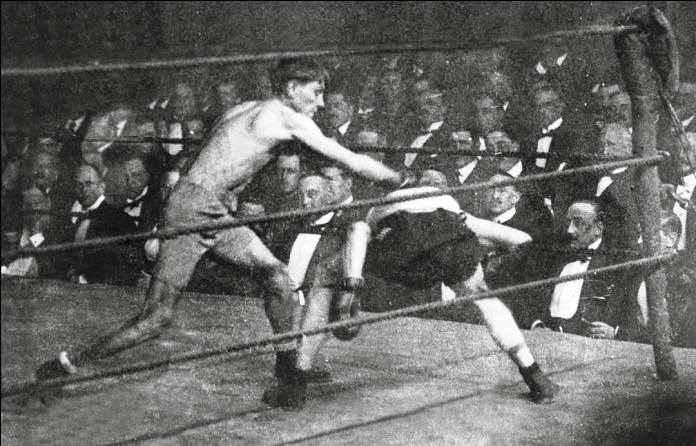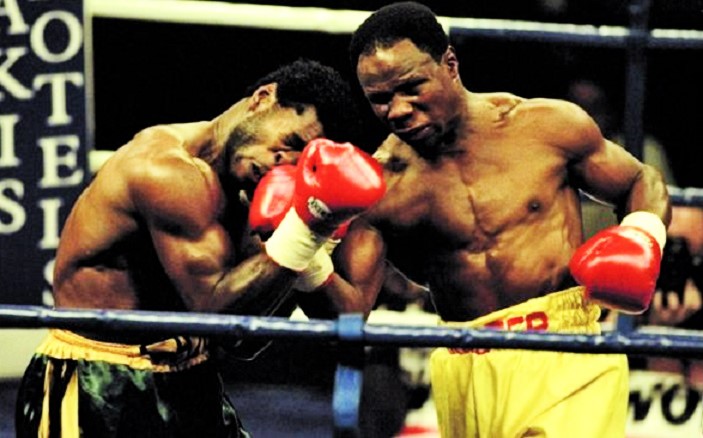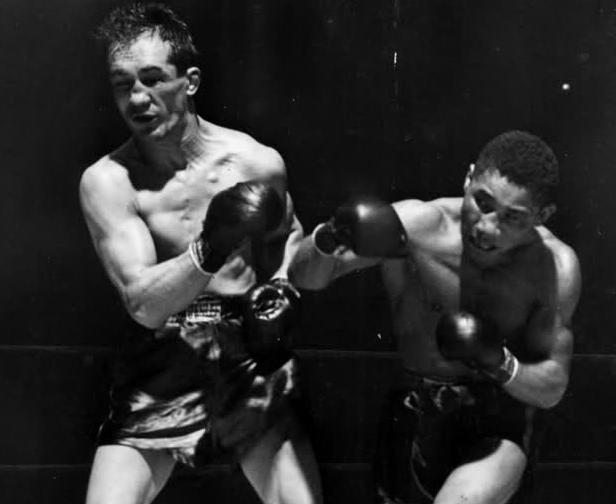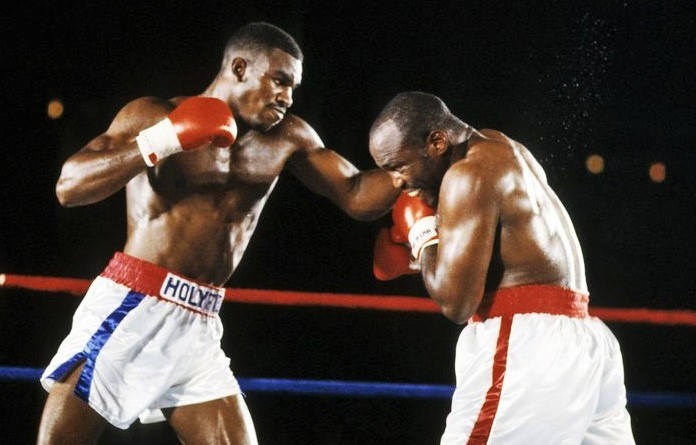Fight City Legends: The Mighty Atom
The writer of a profile of Jimmy Wilde, aka “The Mighty Atom,” is tempted to outline the particulars of Wilde’s incredible record – 152 bouts, 146 victories, a hundred knockouts, the vast majority of those contests fought within a four year span – and simply say, “‘Nuff said.” But, amazing as those numbers are, that would be short-changing both Wilde and those who want to know more about the tiny man who will forever be, without question, one of the greatest boxers who has ever lived. In fact, the amazing Wilde did not engage in a mere 152 fights, but in something closer to eight hundred. No joke.

Wilde came from Tylorstown, Wales, the son of a coal miner. He was a “pit boy” as a child, hewing coal from crevices no grown man could squeeze into. When he began his boxing career in 1908 at the age of sixteen he weighed just 74 pounds. Like many British fighters of that time he started out with what they called “booth bouts,” which were a popular attraction at traveling fairs. For these contests, money was offered to anyone who could last three rounds with Wilde. Since Wilde had the size and build of a small jockey, he routinely gave away as much as a hundred pounds to his opponents, but it didn’t matter; no one ever made it to the end of the third.
We can’t know for sure how many booth bouts Wilde had — estimates range between five and seven hundred — but for three years, Wilde was boxing almost every day, often several times a day. He loved to fight and had wanted to be a prizefighter since he was a child. When he began to compete on a legit basis in 1911, he was already a veteran, a complete professional at the age of nineteen. His mentor was the legendary Jim Driscoll and from him Wilde had learned the technical side of the game, how to parry and counter, and the art of feinting to create openings. But no one had to teach Wilde how to hit; that appeared to be something he was born with.

So powerful was Wilde that throughout his career he fearlessly stepped into the ring against men much bigger and heavier. Bouncing on the balls of his feet, his hands often at his waist, he would strike with rattlesnake quickness, the right his prime weapon. When it landed cleanly, the fight was often over then and there. Observers were baffled by how a boxer so small could hit so hard. Physicians even examined “The Tylorstown Terror” in a vain effort to determine what anatomical feature contributed to his bone-rattling power. How could a man so diminutive, not to mention pale and sickly looking, throw punches hard enough to knock bigger men out cold? The question led to Wilde’s other memorable appellation: “The Ghost With The Hammer In His Hand.”
In 1912, Wilde won his first title, the British 98 pound championship. Fighting roughly every three weeks, he went on to decimate all competition that was anywhere near his fighting weight, in the process building up the longest unbeaten streak in boxing history. It is a record that will likely never be broken: 103 contests, not a single loss. Even more impressive, Jimmy put together this incredible streak in little more than four years, fighting roughly every two weeks. Thus, by the time he won the world flyweight title in 1916, he had already cleaned out the division and for the remainder of his career had no choice but regularly battle men bigger and heavier. Typical was his bout in 1918 with one Joe Conn where he was outweighed by twenty pounds. To put that in perspective, that’s the equivalent of a middleweight facing a heavyweight. Wilde scored six knockdowns before stopping Conn in round twelve.
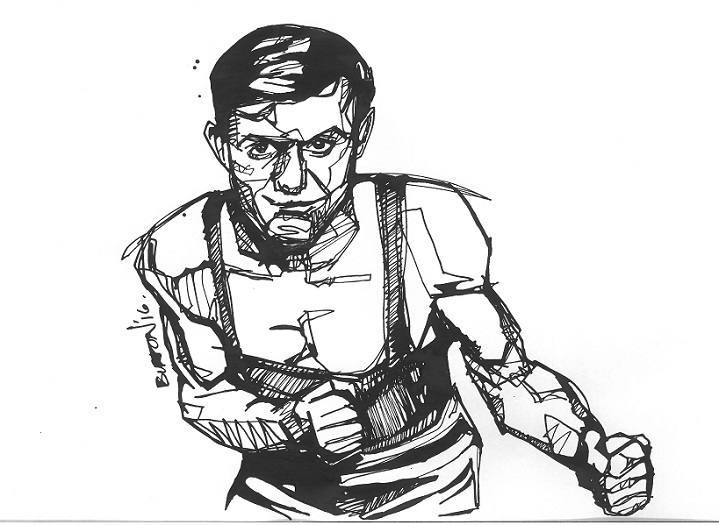
Given how often Wilde fought it is perhaps not surprising that his career ended abruptly, his body finally giving out after more than fifteen years of constant warring. Again spotting his opponent almost twenty pounds, he was stopped by former bantamweight champion Pete Herman when Jimmy’s corner threw in the towel in round seventeen. After, Herman, one of the great bantamweights of all time, dubbed Wilde the best he had ever faced. Jimmy immediately retired but came back two years later to defend his flyweight title against the great Pancho Villa, the first Filipino world champion. Villa gave the aging Welshman a terrible beating before stopping him in the seventh. Wilde never fought again.
There is little question that “The Mighty Atom” merits the top position in any serious ranking of the greatest flyweight boxers who ever lived. Further, he has to be regarded as a strong contender for the title of the finest fighter, pound-for-pound, to ever emerge from the British Isles. In terms of raw firepower, Wilde has few peers. Ring magazine rated him the third most powerful puncher of all time, behind only Joe Louis and Sam Langford. No less an authority than heavyweight champion Gene Tunney called Wilde “the greatest fighter I ever saw.” — Robert Portis

